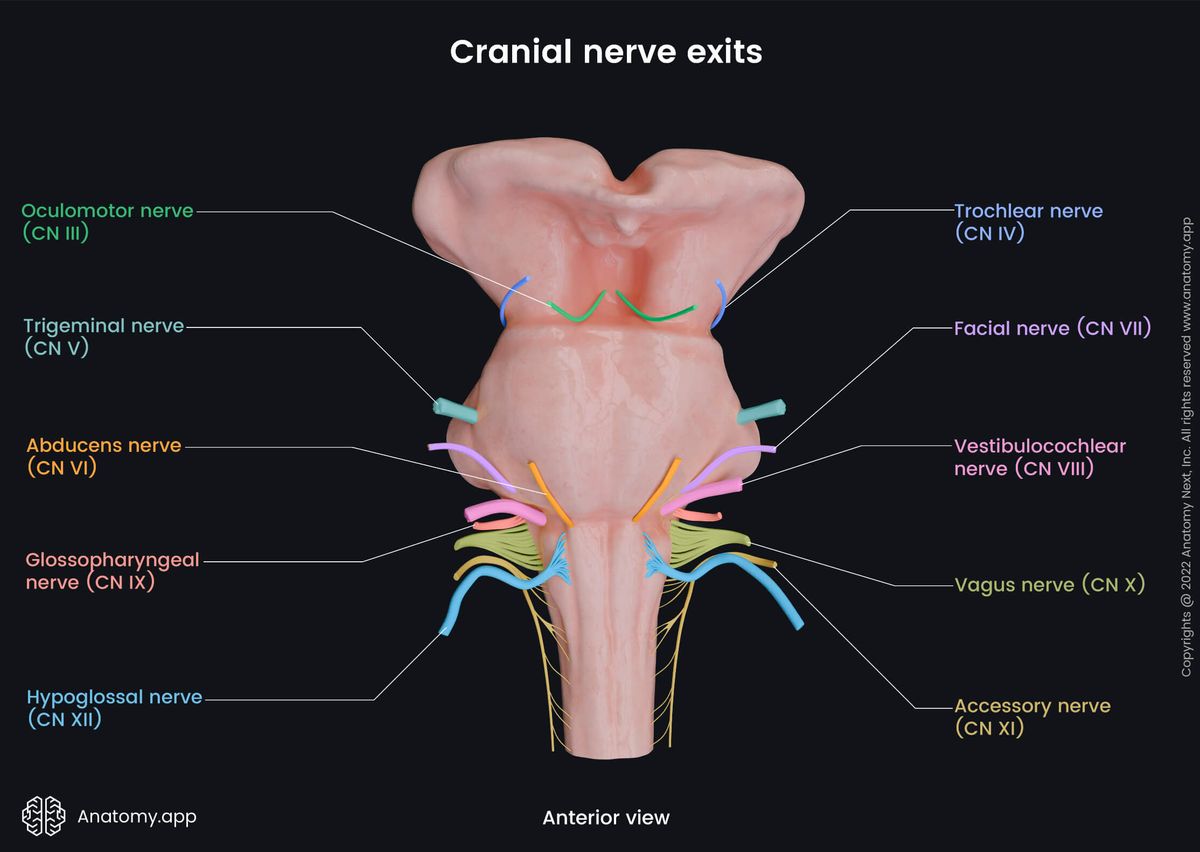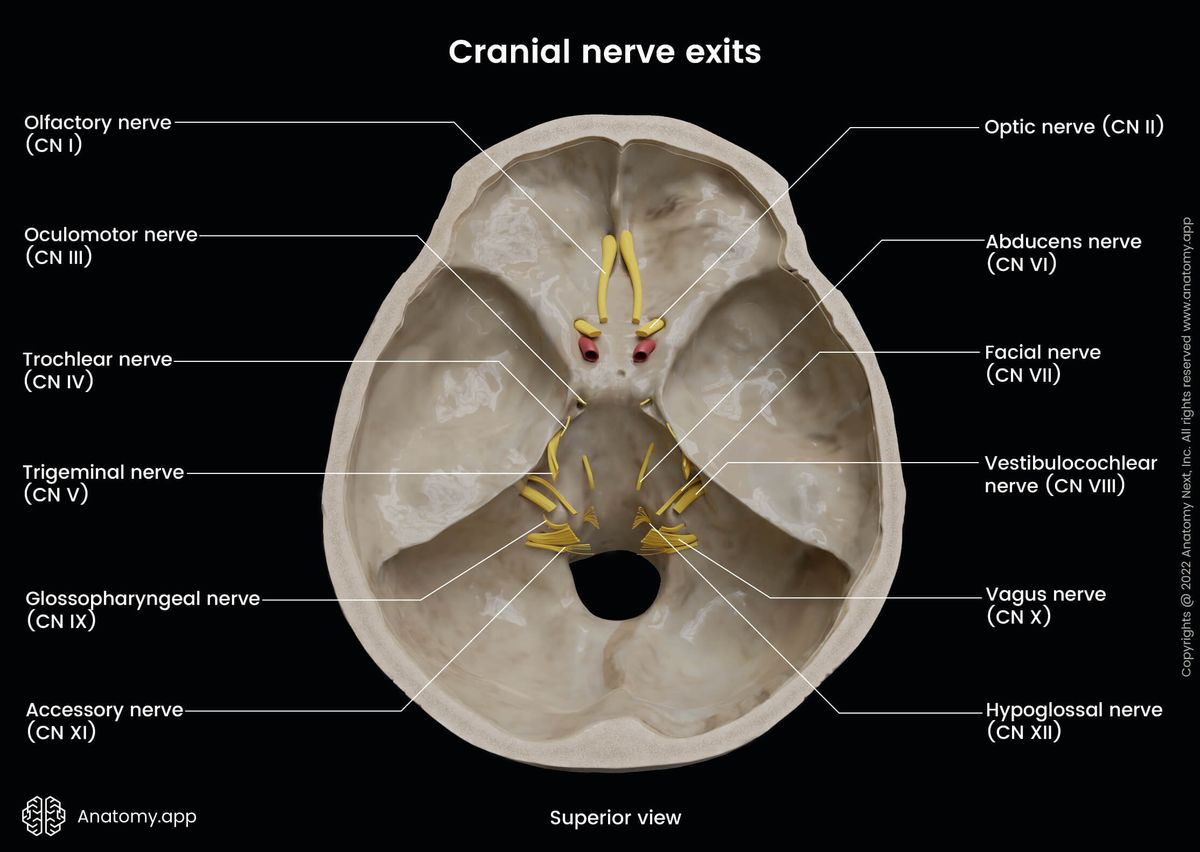- Anatomical terminology
- Skeletal system
- Joints
- Muscles
- Heart
- Blood vessels
- Nervous system
- Respiratory system
- Digestive system
- Lymphatic system
- Female reproductive system
- Male reproductive system
- Endocrine glands
- Eye
- Ear
Cranial nerves
The cranial nerves (Latin: nervi craniales) are peripheral nerves emerging from the brain. There are 12 pairs of cranial nerves, and most of them arise from the brainstem. Along with their sensory and parasympathetic ganglia (collections of neuron cell bodies) the cranial nerves represent the cranial part of the peripheral nervous system (PNS).
However, not all cranial nerves are typical peripheral nerves. The optic nerve (CN II) is actually an extension of the brain originating from the diencephalon during embryonic development, while the olfactory nerve (CN I) is a collection of axons derived from the telencephalon. Thus, these nerves should be more accurately considered as a part of the central nervous system (CNS).

It is also worth noting, that part of the accessory nerve (CN XI) arises from the spinal cord, while the existence of cranial contribution to this nerve is controversial (read more). Thus, it is also not a typical cranial nerve as it does not originate in the brain. Therefore, there are actually only 9 pairs of typical cranial nerves emerging from the brainstem.

The intercranial parts of the cranial nerves are situated within the cranial cavity. The cranial nerves pass through foramina, fissures, or canals of the skull to exit the cranial vault, and then distribute mainly in regions of head and neck. However, one of the cranial nerves, the vagus (from Latin, meaning "wanderer") nerve continues its course in the trunk innervating various thoracic and abdominal organs.
The cranial nerves can carry information to and from the CNS. Afferent fibers provide sensory input, transmitting impulses from the periphery to the CNS, while the efferent fibers give motor output, sending impulses from the central nervous system to the periphery. The somatic efferents innervate skeletal muscles, while the visceral efferents innervate smooth muscle, cardiac muscle, and glands.
Each cranial nerve is composed of nerve fibers of variable functional modalities. While some cranial nerves are purely sensory in their functions (e.g., the optic nerve), others may be motor (e.g., the hypoglossal nerve), or mixed - consisting of fibers of different modalities (e.g., the facial nerve). The fibers carried by the cranial nerves can be categorized based on their functionality in the following way:
- General somatic afferents (GSA)
- General somatic efferents (GSE)
- General visceral afferents (GVA)
- General visceral efferents (GVE)
- Special somatic afferents (SSA)
- Special visceral afferents (SVA)
- Special visceral efferents (SVE)
Each cranial nerve has been given a name. In addition, they are numbered sequentially with Roman numerals I to XII in the order in which they arise from the brain, front to back. Thus, often a cranial nerve is addressed to with the abbreviation "CN" and its respective number, for example, the facial nerve is also known as the seventh cranial nerve or CN VII. The following list presents the Roman numerals with the corresponding English names of the twelve cranial nerves:
- I - Olfactory
- II - Optic
- III - Oculomotor
- IV - Trochlear
- V - Trigeminal
- VI - Abducens
- VII - Facial
- VIII - Vestibulocochlear
- IX - Glossopharyngeal
- X - Vagus
- XI - Accessory
- XII - Hypoglossal

